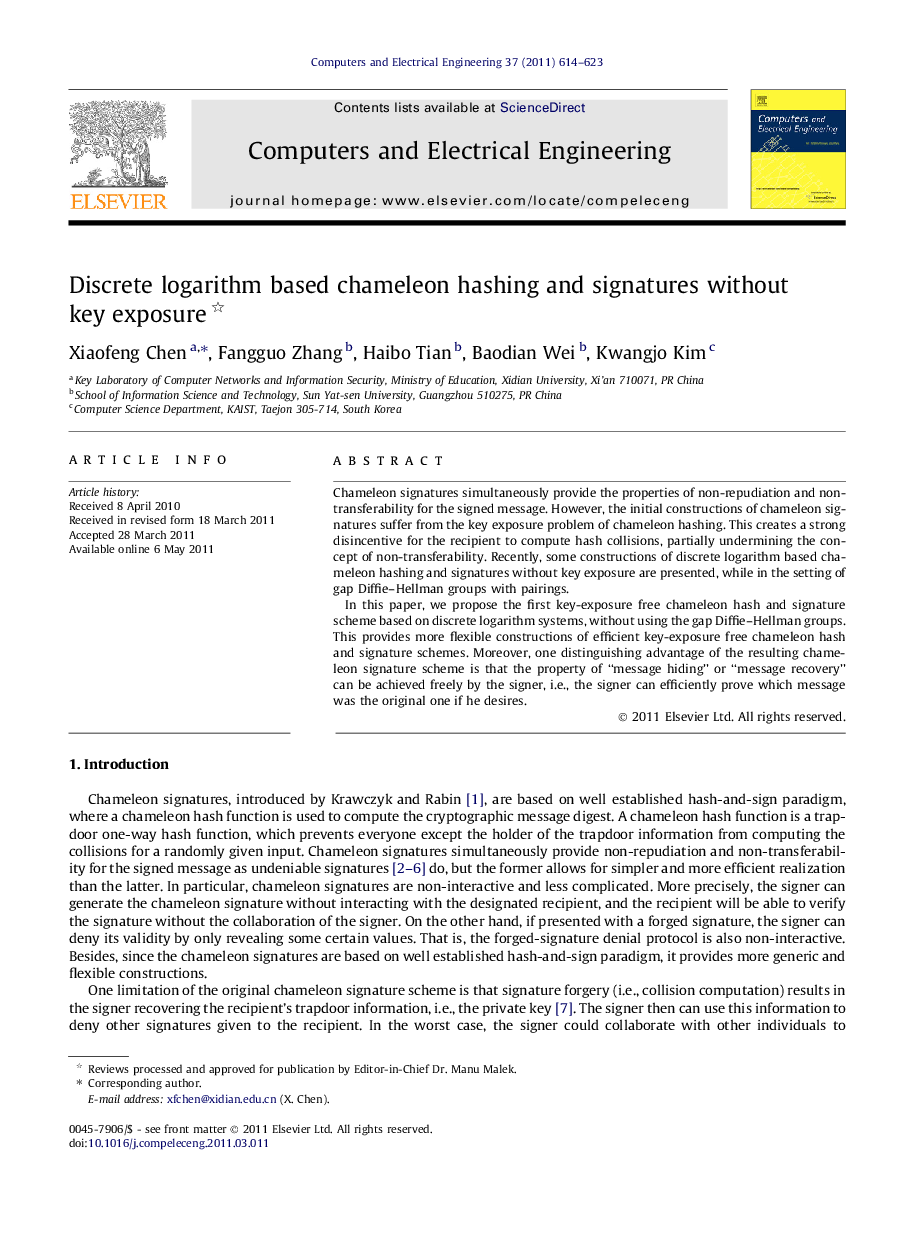| Article ID | Journal | Published Year | Pages | File Type |
|---|---|---|---|---|
| 455213 | Computers & Electrical Engineering | 2011 | 10 Pages |
Chameleon signatures simultaneously provide the properties of non-repudiation and non-transferability for the signed message. However, the initial constructions of chameleon signatures suffer from the key exposure problem of chameleon hashing. This creates a strong disincentive for the recipient to compute hash collisions, partially undermining the concept of non-transferability. Recently, some constructions of discrete logarithm based chameleon hashing and signatures without key exposure are presented, while in the setting of gap Diffie–Hellman groups with pairings.In this paper, we propose the first key-exposure free chameleon hash and signature scheme based on discrete logarithm systems, without using the gap Diffie–Hellman groups. This provides more flexible constructions of efficient key-exposure free chameleon hash and signature schemes. Moreover, one distinguishing advantage of the resulting chameleon signature scheme is that the property of “message hiding” or “message recovery” can be achieved freely by the signer, i.e., the signer can efficiently prove which message was the original one if he desires.
Graphical abstractFigure optionsDownload full-size imageDownload as PowerPoint slideHighlights►We propose a DL-based key-exposure free chameleon hashing in the non-GDH groups. ► We propose a chameleon signature scheme based on the new chameleon hashing. ► The chameleon signature scheme achieves the property of message hiding. ► The chameleon signature scheme also achieves the property of message recovery.
